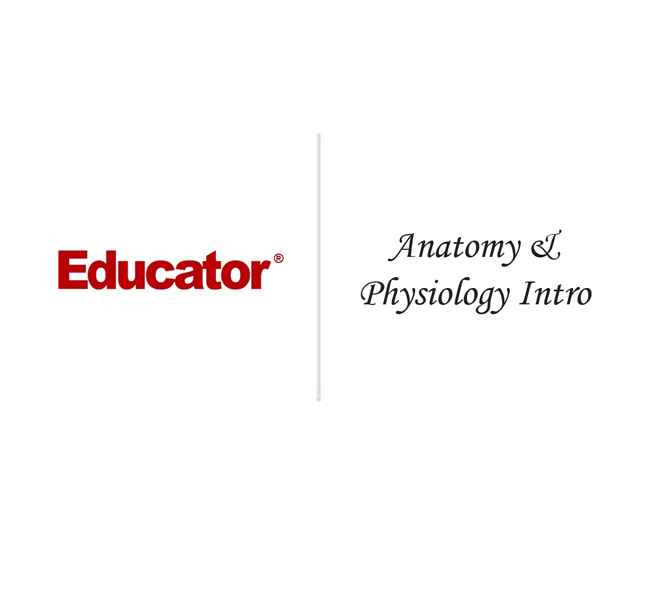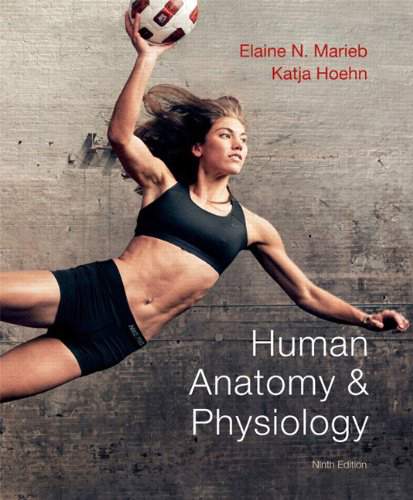Click video to play

For more information, please see full course syllabus of Anatomy & Physiology
Anatomy & Physiology Introduction to Anatomy & Physiology
Anatomy describes the form, structure, and location of body parts, while physiology explains their function in important processes and how they relate to each other. Anatomy begins with understanding the building blocks of matter. Sub-atomic particles like protons, neutrons, and electrons form atoms, such as oxygen, carbon, and hydrogen, the most common elements in the human body. Atoms combine to form molecules, which can range from two atoms to several hundred as in macromolecules. Bigger structures include organs, which are composed of tissues made of cells which contain organelles. Organ systems (e.g. respiratory and circulatory), cooperate to form organisms. In anatomy, positions in the body are carefully described according to their relative positions (i.e. anterior vs. posterior); body planes (coronal vs. sagittal and transverse); and quadrants and regions.
Share this knowledge with your friends!
Copy & Paste this embed code into your website’s HTML
Please ensure that your website editor is in text mode when you paste the code.(In Wordpress, the mode button is on the top right corner.)
- - Allow users to view the embedded video in full-size.










































 Answer Engine
Answer Engine




2 answers
Last reply by: Swati Sharma
Tue Jun 5, 2018 1:16 PM
Post by Swati Sharma on June 5, 2018
Dear Sir,
Can I use these videos for MCAT preparation?. I would be grateful if you could let me know. I am really struggling to choose as there are so many videos online.
Very Respectfully
Swati Sharma
1 answer
Fri May 5, 2017 9:28 AM
Post by ye Chaoran on May 5, 2017
hi, Sir, My internet cannot watch your lessons video .Is there any way else to get it? please help me!
1 answer
Sat May 23, 2015 6:33 PM
Post by R Abdullah on May 23, 2015
Hi Mr. Cardella
I was wondering if you can recommend a textbook or your personal liking or one that follows your course.
Thank you,
Rasheed
1 answer
Wed Mar 4, 2015 12:50 AM
Post by Anhtuan Tran on March 3, 2015
Does membrane belong to organ level of organization ?
2 answers
Last reply by: ye Chaoran
Fri May 5, 2017 9:29 AM
Post by ye Chaoran on June 25, 2014
hi, Sir:
I love your lessons very much! and I just pay $300 for it. please let me know how to download your lessons so that I can use it in my iPod.
thank you very much!
your sincerely Isaiah Ye Chaoran
0 answers
Post by Laura Mejia on May 31, 2014
Your lessons are brilliant! Best biology teacher I have ever had.
Your teaching has given me so much confidence in biology and has inspired
me to keep on learning more. It made a huge impact on my decision to go to med school :)
Thank you!
0 answers
Post by Joel Fredin on March 30, 2014
Thanks so much for this course Bryan, i don't think you know how much this helps me :)
Regards Joel
2 answers
Mon Dec 2, 2013 7:04 PM
Post by Adam Main on November 30, 2013
hi Bryan, great lectures and a huge thanks for that! Are there any lectures on what a cell needs to survive? Thanks for your time.
1 answer
Mon Oct 28, 2013 12:45 PM
Post by saman mayeli on October 28, 2013
Is there any lecture slides for this module?
4 answers
Sun Oct 6, 2013 12:28 PM
Post by Jason Dryden on September 27, 2013
What subheading can I find the glycocalyx and its function?